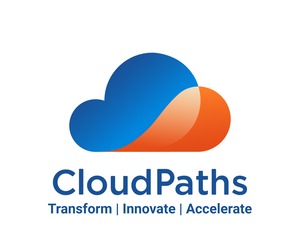SAP Procure to Pay
Filter By
Browse By
- SAP Analytics and AI
- SAP Application Development and Integration
- All SAP Application Development and Integration
- SAP ABAP
- SAP ABAP Development Tools
- SAP ABAP Test Cockpit
- SAP API Management
- SAP BAPI
- SAP Basis
- SAP BRF
- SAP Business Application Studio
- SAP CMS
- SAP Design Studio
- SAP Development Tools
- SAP DevOps
- SAP EAI
- SAP EDI
- SAP Extension Suite
- SAP Fiori
- SAP Fiori Elements
- SAP Integration Suite
- SAP Low Code Application Development
- SAP Low Code Automation
- SAP Netweaver
- SAP Release Management
- SAP UI5
- SAP Web Application Server
- SAP Web IDE
- SAP Business Process Management
- SAP Center of Excellence
- SAP CIO
- SAP Customer Experience
- SAP Data and Data Management
- All SAP Data and Data Management
- SAP BW
- SAP BW/4HANA
- SAP Crystal Reporting
- SAP Data Archiving
- SAP Data Center
- SAP Data Governance
- SAP Data Integration
- SAP Data Migration
- SAP Data Quality
- SAP Data Services
- SAP Data Strategy
- SAP Data Visualization
- SAP Data Warehouse Cloud
- SAP DMS
- SAP Document Control
- SAP EIM
- SAP ETL
- SAP ETL Tools
- SAP HANA
- SAP HANA Administration
- SAP HANA Deployment Infrastructure
- SAP HANA Studio
- SAP Master Data
- SAP Master Data Governance
- SAP MDM
- SAP Enterprise Architect
- SAP Enterprise Asset Management
- SAP ERP
- SAP Finance
- All SAP Finance
- SAP Accounting
- SAP AR AP
- SAP Asset Accounting
- SAP Billing Systems
- SAP BPC
- SAP BRIM
- SAP Cash Management
- SAP Central Finance
- SAP Controlling
- SAP COPA
- SAP Cost Center Accounting
- SAP e-invoicing
- SAP FICO
- SAP Finance Automation
- SAP Financial Closing Cockpit
- SAP Financial Consolidation
- SAP Financial Planning
- SAP FX Risk
- SAP General Ledger
- SAP Global Tax Management
- SAP Hyperion
- SAP Order to Cash
- SAP Payment Processing
- SAP Profitability Analysis
- SAP Rebate Management
- SAP S/4HANA Finance
- SAP Universal Journal
- SAP Governance Risk and Compliance
- SAP Human Capital Management
- SAP Intelligent Technologies
- SAP Platform and Technology
- All SAP Platform and Technology
- SAP Business Technology Platform
- SAP Cloud Connector
- SAP Cloud Integration Platform
- SAP Cloud Migration
- SAP Cloud Platform
- SAP Cloud Providers
- SAP Cloud Strategy
- SAP Container Platform
- SAP Digital Asset Management
- SAP Digital Integration Hub
- SAP Digital Signature
- SAP HANA Enterprise Cloud
- SAP HEC
- SAP Hyperscalers
- SAP Infrastructure
- SAP Messaging
- SAP Smart Forms
- SAP Quality and Testing
- SAP Security
- SAP Spend Management
- SAP Supply Chain Management
- All SAP Supply Chain Management
- SAP APO
- SAP Asset Management
- SAP Business Network
- SAP Digital Manufacturing Cloud
- SAP Digital Twin
- SAP EWM
- SAP IBP
- SAP Inventory Management
- SAP Label Printing
- SAP Logistics
- SAP Manufacturing
- SAP Manufacturing Automation
- SAP MES
- SAP MII
- SAP MM
- SAP MRO
- SAP MRP
- SAP Order Management
- SAP Plant Maintenance
- SAP PLM
- SAP Production Planning
- SAP S&OP
- SAP SD
- SAP SPM
- SAP Supply Chain Planning
- SAP Track and Trace
- SAP Transportation Management
- SAP System Administration
Spend Management: SAP Procure to Pay
Businesses are vulnerable today. External factors can affect procurement, from pricing negotiations to supplier management. Disorganization in procurement can lead to using non approved vendors, ordering products outside of the purchasing department, or a combination of both.
Procure to Pay Simply Defined
A procure to pay process includes sub processes that help meet the goal of paying invoices on time while maximizing cash flow. Businesses may use a combination of solutions including SAP, to support each level of the sub processes.
The key sub processes of SAP Procure to Pay include:
- Purchase Requisition. A request for more stock by material and quantity.
- Purchase Order. Assigning the request to a vendor, with an agreed price and payment/delivery terms.
- Order Confirmation: Receipt confirmation from the vendor with a confirmed delivery date.
- Delivery Notification. Receiving the purchase order into inventory per the delivery terms.
- Approval and Invoice Payment. Finance approval and release of payment to the vendor.
It is also important to Evaluate Supplier Performance by reviewing compliance, quality, responsiveness and on time delivery measures. This will validate that you are using the best performing vendors for your partnerships.
Spend Management: SAP Procure to Pay
Businesses are vulnerable today. External factors can affect procurement, from pricing negotiations to supplier management. Disorganization in procurement can lead to using non approved vendors, ordering products outside of the purchasing department, or a combination of both.
Procure to Pay Simply Defined
A procure to pay process includes sub processes that help meet the goal of paying invoices on time while maximizing cash flow. Businesses may use a combination of solutions including SAP, to support each level of the sub processes.
The key sub processes of SAP Procure to Pay include:
- Purchase Requisition. A request for more stock by material and quantity.
- Purchase Order. Assigning the request to a vendor, with an agreed price and payment/delivery terms.
- Order Confirmation: Receipt confirmation from the vendor with a confirmed delivery date.
- Delivery Notification. Receiving the purchase order into inventory per the delivery terms.
- Approval and Invoice Payment. Finance approval and release of payment to the vendor.
It is also important to Evaluate Supplier Performance by reviewing compliance, quality, responsiveness and on time delivery measures. This will validate that you are using the best performing vendors for your partnerships.
Key Capabilities include:
- SAP Procure to Pay data on suppliers are digitally stored in a central place in real time.
- Buyers evaluate online catalogs from existing and new suppliers, review and approve purchase orders, and check the status of shipments in electronic formats.
- Cloud-based data with SAP Procure to Pay can create approval flows, ensuring savings reach your bottom-line.
SAP Procure to Pay: Tips for Success
- Set realistic timelines. Set time to define a holistic framework of business and technical requirements.
- Choose stakeholders wisely. Include diverse global stakeholders working toward standardizing best practices.
- Keep it simple. See where requirements can be condensed or combined to keep processes simplified.
- Be flexible. Consider all suggestions but think carefully about the optimal solutions.
- Do excessive testing. Test with real life scenario test scripts to help you find and resolve gaps.
Technical resources partners for consideration might be – SAP, Icertis or OpsVeda.
Further resources for SAPinsiders
- The Case for Automation in Procure to Pay. Rizal Ahmed, SAPinsider gives insight on what has changed today is the ease that you can apply to automation without heavy coding or integration.
- Procurement Transformation: Automation in P2P: Shashi Jina, SAPinsiderreviews an automation footprint of functions and capabilities with SAP Procure to Pay in this article .
- Procurement Pivotal to Managing Disruptions Says SAP Research: John Yuva, SAPinsider investigates a survey about what keeps supply chain professionals up at night, read it here.
737 results
-

 Premium
Premium
Processing Hourly Payments Based on Union Agreements or Positions
Reading time: 19 mins
Learn how to calculate the hourly rate based on union agreements, positions, or premiums with the extra-pay indicator functionality in SAP payroll. See how these various options can be used and customized in SAP payroll to calculate and process the hourly payments of the employees based on client requirements. Key Concept There are three primary…...…
-

 Premium
Premium
Top Tips to Optimize Your Automatic Payment Program
Reading time: 17 mins
Learn how to better use the Automatic Payment Program (APP) feature in an SAP system for making payments to your vendors. Discover tips to optimize the APP process, such as automating APP, automating email generation from APP, restricting selections, and grouping open items. Key Concept The Automatic Payment Program (APP) is a commonly used SAP…...…
-

 Premium
Premium
Two Ways to Easily Access Payroll Information
Reading time: 21 mins
Accessing past payroll information can be confusing if you do not know about the relevant storage architecture and code. Learn how R/3 uses the concept of clusters to store information. Find out about two approaches to access payroll information that is stored in clusters. Key Concept For most data pertinent to SAP applications, two methods…...…
-
-

 Premium
Premium
Use a Global Payroll Strategy to Leverage the SAP Payroll System
Reading time: 15 mins
Companies that implement SAP payroll systems often find themselves challenged with defining global strategies and solutions for issues that can arise during an implementation. This case study, based on numerous implementations, outlines options and approaches you can take to meet those challenges. Key Concept The definition of global payroll can differ depending on the context. Global…...…
-

 Premium
Premium
How to Use the SAP General Ledger Functionality to Post Employee Liabilities in Different Ways
Reading time: 17 mins
Learn how to use the three options in the SAP General Ledger in FI in SAP ERP HCM to post employees’ liabilities to finance. See step-by-step instructions on using the IMG to configure this new feature without having to write complex schemas. Key Concept Payroll liabilities are deductions, such as taxes, payments to 401(k) accounts,…...…
-

 Premium
Premium
New Business Function in ECC 6 EHP 4 Streamlines Down Payment Process
Reading time: 8 mins
SAP ERP Central Component (SAP ECC) 6.0 enhancement package 4 (SAP_APPL 604) includes a new business function, LOG_MMFI_P2P, to facilitate down payment creation and clearing. Learn how to leverage this new cross-application down payment functionality in your organization. Key Concept The vendor down payment functionality, available in SAP systems for a long time, has allowed…...…
-

- SAP Cash Management
 Premium
Premium
Key Steps to Make Enhancements to a Payment Medium Workbench File
Reading time: 14 mins
Learn how to add key data to the SWIFT (Society for the Worldwide Interbank Telecommunication) MT101 payment file that is not delivered in SAP standard systems using event-based function modules. Discover how dynamic function calls enable you to create country- or bank-specific logic that allows you one MT101 payment file format with an unlimited number…...…
-
-

 Premium
Premium
How to Post Employees’ Net Pay to Different G/L Accounts Based on Payment Type
Reading time: 9 mins
SAP system tax wage types can be posted to different general ledger (G/L) accounts in the financial accounting (FI) system based on the tax authority. Learn how the posting of payments functionality enables you to post an employee’s net pay (wage type /559) to two different G/L accounts in FI based on the employee’s payment…...…
-

 Premium
Premium
Ready Your SAP System for the New Payment Methods within the Single Euro Payments Area
Reading time: 15 mins
By 2014 the Single Euro Payments Area (SEPA) is likely to become mandatory for all companies doing business in Europe. One of the most significant impacts is expected to be the decommissioning of domestic payment formats. Become familiar with the two new SEPA direct debit (SDD) payment methods being introduced with SEPA. Get detailed insight…...…
-

 Premium
Premium
Automate Period-Based Payments in the SAP Payroll System
Reading time: 12 mins
Learn how to use standard SAP payroll functionality to automate your business policies on the basis of monthly payroll periods. Key Concept Restricting execution of personnel calculation rules based on payroll periods is made easy by using standard SAP payroll operations. By employing this methodology, you can automate business policies based on payroll period constraints…....…
Featured Insiders
-

Biswaranjan Senapati
Capitol Technology University
-

Gaurav Pandey
Principal SAP Architect, Amgen
-

James Marland
Global Vice President, Sales Excellence, Intelligent Spend & Business Network, SAP
Become a Member
Unlimited access to thousands of resources for SAP-specific expertise that can only be found here.
Upcoming Events
Related Vendors
Your request has been successfully sent


